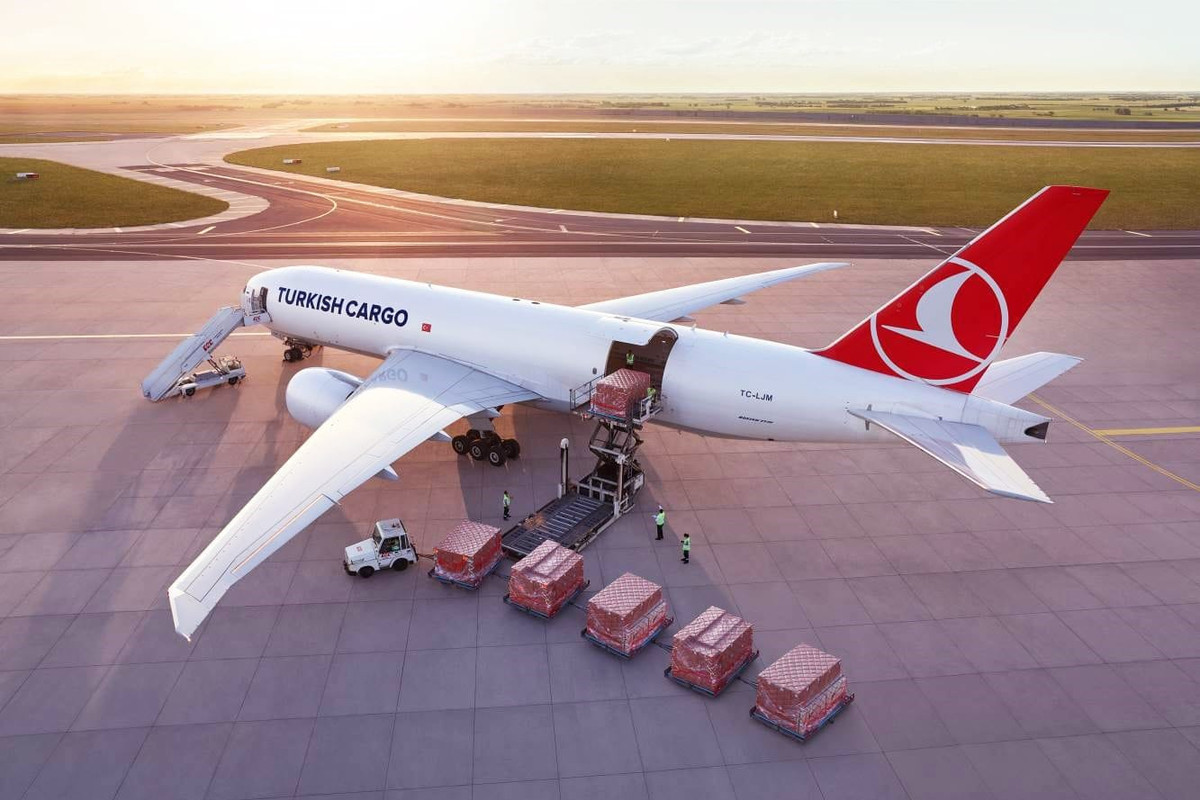
- Southeast Asia is becoming a major region for air freight as Vietnam and Thailand grow as high-tech manufacturing hubs, driving demand for flexible capacity and digital solutions.
- The Turkish shipping company combines cargo space and belly space, expands block space agreements, and uses its SMARTIST center in Istanbul to provide fast, safe and specialized handling of time-sensitive shipments such as pharmaceuticals and electronics.
- Dynamic capacity management, AI-based tools and digital upgrades enable real-time demand matching and improve visibility and operational efficiency across volatile regional and intercontinental routes.
As production footprints shift and e-commerce accelerates, Southeast Asia has become a strategic battleground for global air freight companies. Vietnam and Thailand, in particular, are on the rise as high-tech manufacturing hubs – and data shows that air freight flows are evolving accordingly.
While China and Hong Kong remain dominant in terms of outbound tonnage, regional diversification is prompting more carriers to rethink capacity allocation, digital capabilities and hub design. Turkish Airlines Cargo is among the companies that moved early to accommodate this shift, providing a case study of how flexible deployment and customized solutions have become key to remaining competitive.
Southeast Asia’s export profile is changing
Vietnam’s electronics exports to the United States rose by more than 75 percent between 2020 and 2024, according to UN Comtrade data. Meanwhile, Thailand has become a rising power in automobile and semiconductor production.
“At Turkish Cargo, we see strong growth potential in Southeast Asia, particularly in Vietnam and Thailand, where rising high-tech production and e-commerce demand are driving exports to the US,” said Volkan Solmaz, Vice President of Cargo Asia and Far East at Turkish Airlines.
This increasing demand is pushing carriers to bypass traditional shipping lanes or seasonal charters. Solmaz pointed to the Turkish shipping company expanding space agreements in Hong Kong and Vietnam as part of a long-term strategy. The goal: to secure a predictable increase for exporters in a region where competition for production capacity is intense.
The use of tummy control on high-frequency passenger services is also being strategically linked to freight capacity, especially on the eastbound lanes. “We are optimizing traffic in both directions to ensure that all available space is used efficiently,” Solmaz said. “Close coordination between freight and passenger operations allows us to allocate capacity efficiently throughout the region.”
From speed to specialization
In digitally mature Asian markets, customers increasingly expect instant booking, real-time visibility and fast delivery – especially for time-sensitive goods such as pharmaceuticals, semiconductors and e-commerce parcels. This is reshaping how airlines invest in both digital systems and physical infrastructure.
“Asia Pacific is one of the most digitally advanced regions, and this is clearly reflected in customer expectations,” Solmaz noted. “Today, more than 90% of bookings in Asia are processed digitally via TKGO.”
The carrier’s Istanbul hub, SMARTIST, plays a crucial role in providing the speed and security these shipments require. Tail-to-tail communications now reduce transit time on corridors such as China to South America to just 27 hours. “It’s almost like connecting two ends of the world in one day,” Solmaz said.
Dedicated handling zones, ASRS systems, and AI-driven coordination tools are becoming standard requirements rather than luxury features. “The facility is equipped with ASRS systems, 24/7 temperature-controlled areas, and fully secured VAL and VUN rooms,” Solmaz explained, noting its role in ensuring high-value shipments are processed with minimal delays.
The focus on specialty goods is particularly evident in the pharmaceutical and electronics sectors. For example, Turkgo Cargo’s TK Pharma product is CEIV/GDP certified and is divided into tiered service levels. For electronics, the carrier has introduced “secure transportation zones and enhanced processing flows to reduce risks and shorten transit times,” Solmaz said.
Dynamic capability is the new normal
The challenge in 2025 is not just capabilities, but also agility. Air cargo flows in Asia remain volatile, with uneven recovery in consumer markets and ongoing shifts in sourcing. Turkish Airlines’ response has been to rely less on fixed freight cycles and more on real-time demand matching.
“We are adopting dynamic management and proactive measures to improve capacity across our network,” Solmaz said. This includes charter flights between Asia from high-demand sources, the use of more than 60 partner airlines for flexible routing, and freighter combinations tailored to the markets.
The main cargo airports in China and Hong Kong still provide large volumes of cargo to Europe and Africa, but the growth curve is beginning to flatten. Solmaz sees diversification taking root elsewhere: “At the same time, multimedia centers in Central Asia are becoming more important as trade flows diversify.”
This includes plans to establish a new hub in Central Asia, along with ongoing upgrades to TSK’s digital tools. “We have new generation cargo aircraft on order and are upgrading our digital systems to provide customers with greater visibility and control,” Solmaz emphasized.
Notably, machine learning-based revenue management systems and AI assistants like CARGY are being integrated to improve pricing and booking response times – a clear signal that OT is no longer isolated, but integrated into customer service and business decision-making.


